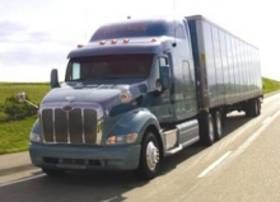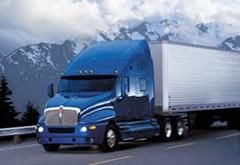Fuel Gauge Or Mileage?
Topic 25697 | Page 1
Sounds like the gauge is inaccurate.
Due to running out of fuel on my very first load because of a faulty gauge, I always use mileage to figure gallons left. My tractor also has a display showing gallons used that is much more accurate than my fuel gauge.
Also of note, I can’t put the maximum amount of fuel in my tanks because the fill hole isn’t on the exact top of the tank. There is still some room in the tank even if they are filled right up to the cap. I run two eighty gallon tanks, at maximum capacity, I’ll be on the side of the road at 130 gallons used.
OWI:
Operating While Intoxicated

After a while you will get your truck figured out as far as fuel left. When mine gets to 1/8th tank and the light comes on I know I got to find fuel within a hundred miles. On the old International day cab I had on the farm when it got to a 1/4 tank I better be finding the next place to stop.
Day Cab:
A tractor which does not have a sleeper berth attached to it. Normally used for local routes where drivers go home every night.

I see a lot of experienced drivers recommend actually looking in your tanks during pti for this very reason, you never know when your fuel guage is going to go out on you. Also if one of the fuel vents cracks it will cause the excess fuel to always drain to one tank or the other. My trucks guage gets wonky at and below 1/4 as well, however since we should consider 1/4 empty its not a big deal as I am usually rolling into my fuel stop at or before this becomes an issue for me. Id make your company aware of the potential guagr issue and hopefully they will fix it.
I figure 1000 miles for a full tank. Yes, depending on light weight and lack of mountains i could get more. but figuring 1000 miles i will mever get stuck anywhere.
The tanks have a message printed on them "Do not fill above 90% capacity"
Most i ever put in was 150.gallons.
I think the truck manufacturers build in a safety factor that "encourages" you to get fuel before you run out. I always had two 100 gal. tanks and several times my fuel stop was still ahead when the 'low fuel' warning light came on. The most I ever put in at those times was about 140 gals. Theoretically, I still had 60 gals. left but I sure didn't want to see exactly when I would run out.
And the Bi-Polar lady from the planet of Qualcomm would always tell me that I had arrived at my fuel stop (which was so helpful, otherwise I would have never known), and I was going to need, for example, "143 gals." of fuel. Well I could almost always subtract 20 gals. and be accurate with the lower number. I almost always topped off my tanks and could usually squeeze about 10 more gallons in after the auto cut-off. Sometimes in real cold temps, it's better to run with lower tanks, but that's a whole different discussion.
Qualcomm:
Omnitracs (a.k.a. Qualcomm) is a satellite-based messaging system with built-in GPS capabilities built by Qualcomm. It has a small computer screen and keyboard and is tied into the truck’s computer. It allows trucking companies to track where the driver is at, monitor the truck, and send and receive messages with the driver – similar to email.HOS:
Hours Of Service
HOS refers to the logbook hours of service regulations.Why run with a lower fuel level in cold temps, Bruce?

I figure 1000 miles for a full tank. Yes, depending on light weight and lack of mountains i could get more. but figuring 1000 miles i will mever get stuck anywhere.
The tanks have a message printed on them "Do not fill above 90% capacity"
Most i ever put in was 150.gallons.
I'll be at around 950, so that is some comfort.
Why run with a lower fuel level in cold temps, Bruce?
Schneider wanted us to keep no more that 3/4 tank during that extreme cold last winter. The lower volume helped keep the fuel that was left to circulate warmer. They said it helped eliminate gelling.
New Reply:
New! Check out our help videos for a better understanding of our forum features

















Preview:
This topic has the following tags:
Advice For New Truck Drivers Dealing With The Weather Driver Responsibilities Items To Bring On The Road Truck Maintenance







 TT On Facebook
TT On Facebook
I don't understand why my fuel gauge drops to below 1/4 and when I fill up, I can only hold 120 - 130 gallons. I have 2 120 gallon tanks, so the math tells me that's around 1/2 full or a little less. My company has started planning our fuel stops for us and I'm at about 1/4 left with 190 miles to my fuel stop. I'm also just under 80,000. I'll rely on the gauge and will probably have to stop for a few gallons before I fill up. I guess my question is, how much of that 240 gallons do I get to use?